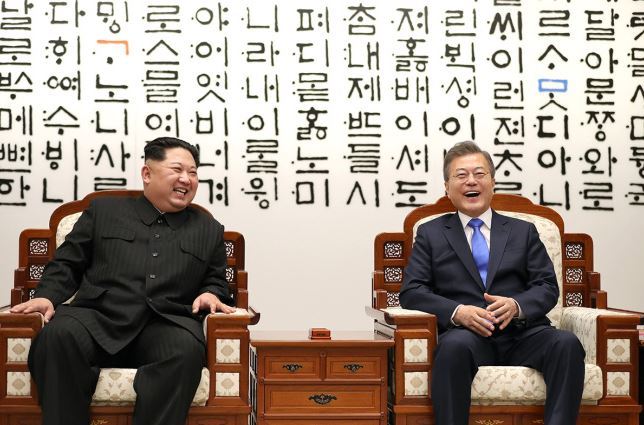The first-ever inter-Korean summit between late President Kim Dae-jung and late North Korean leader Kim Jong-il took place in Pyongyang over three days beginning June 13, 2000.
Kim Dae-jung was the first South Korean leader to roll out an engagement policy toward the North labeled the “Sunshine Policy,” and the meeting resulted in the June 15 Declaration.
Kim Dae-jung was the first South Korean leader to roll out an engagement policy toward the North labeled the “Sunshine Policy,” and the meeting resulted in the June 15 Declaration.

The declaration stated that the two Koreas would seek closer economic cooperation and work together as the main parties for unification. The declaration also stated the two Koreas see similarities in each other’s model for unification – Seoul’s suggestion of a coalition and Pyongyang’s suggestion of a loose federation – and that the two would cooperate in seeking a solution along similar lines.
The declaration also led to the creation of the Kaesong industrial park, and tours to Kumgangsan in North Korea.
The second meeting between leaders of the two Koreas next took place in Pyongyang, from Oct. 2 to 4, 2007.
The meeting, between late President Roh Moo-hyun and Kim Jong-il, led to the October 4 Declaration. The declaration stated that the two sides would cooperate in putting the agreements of the June 15 Declaration into action, and ease military tension.
The declaration also called for cooperation in upholding the Sept. 19 joint declaration from six-party talks, and the Feb. 13 agreement.
The latter states the North will close nuclear facilities and receive energy support in return from five nations: South Korea, China, Japan, Russia and the US.
The agreements, both from the summit and six-party talks, did not last, with North Korea later resuming its nuclear weapons program.
In the following decade of conservative administrations, inter-Korean communications ground to a halt, and the third summit was arranged only this year.
For the third summit on April 27, President Moon Jae-in met North Korean leader Kim Jong-un on the South’s side of Panmunjom, marking the first time a North Korean leader set foot south of the border, and resulted in the Panmunjom Declaration.
As with earlier declarations, the Panmunjom Declaration outlines agreements to improve relations and reduce military tension.
Unlike those that came before it, the Panmunjom Declaration states the two sides agree on complete denuclearization of the peninsula, and that a declaration of the end of the Korean War will be sought within the year.
The fourth summit followed less than a month later, on May 26 without prior announcement. The meeting took place on the North’s side of Panmunjom, and announced to the public after it was over.
The meeting took place at a time when US-North Korea relations took a major downturn, with US President Donald Trump publicly calling off his planned meeting with Kim Jong-un.
While conservatives accused Moon of deceiving the public, US-North Korean negotiations resumed following the meeting, and the Trump-Kim summit was held in Singapore on June 12.
By Choi He-suk (cheesuk@heraldcorp.com)


![[Exclusive] Korean military set to ban iPhones over 'security' concerns](http://res.heraldm.com/phpwas/restmb_idxmake.php?idx=644&simg=/content/image/2024/04/23/20240423050599_0.jpg&u=20240423183955)

![[Graphic News] 77% of young Koreans still financially dependent](http://res.heraldm.com/phpwas/restmb_idxmake.php?idx=644&simg=/content/image/2024/04/22/20240422050762_0.gif&u=)



![[Pressure points] Leggings in public: Fashion statement or social faux pas?](http://res.heraldm.com/phpwas/restmb_idxmake.php?idx=644&simg=/content/image/2024/04/23/20240423050669_0.jpg&u=)










